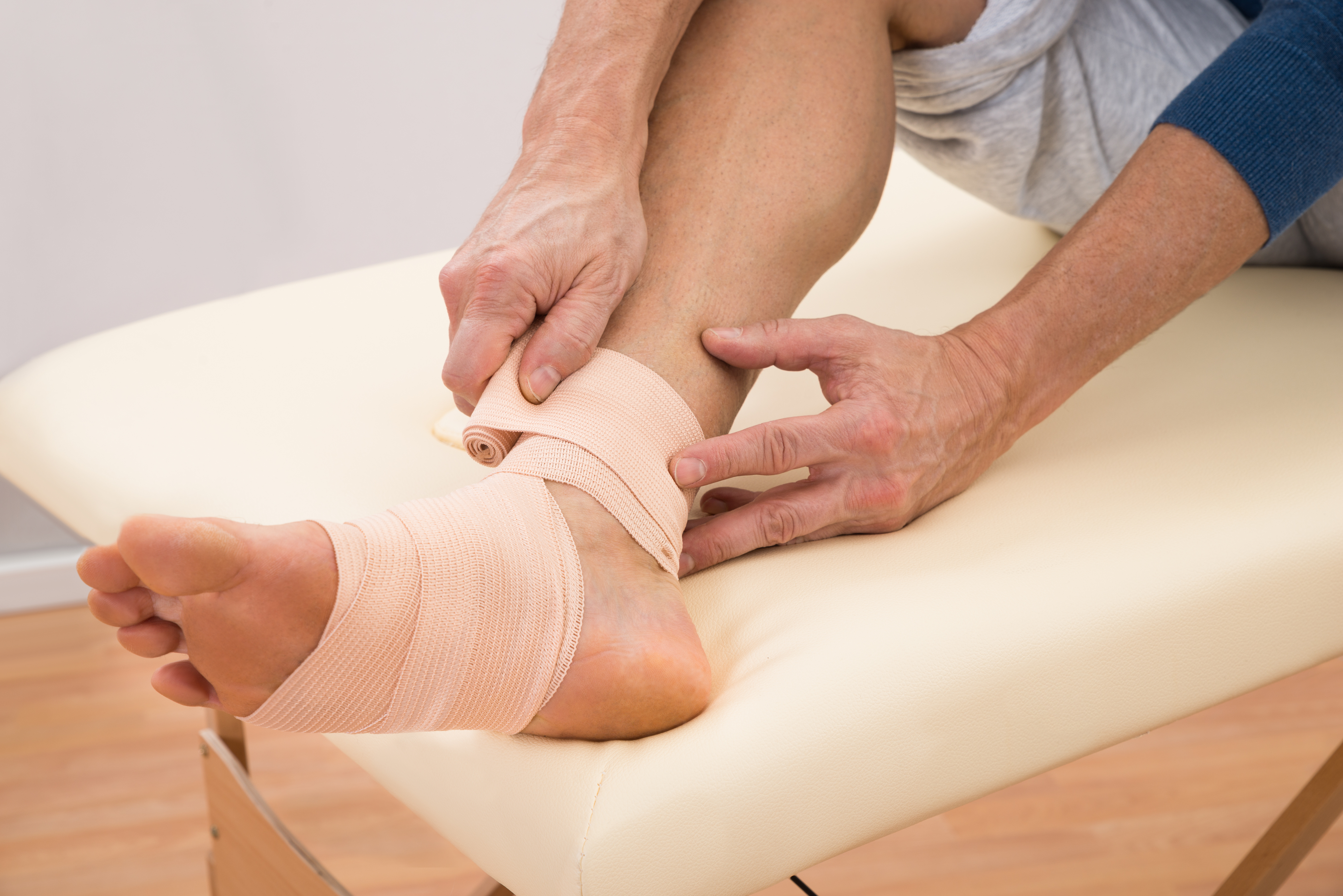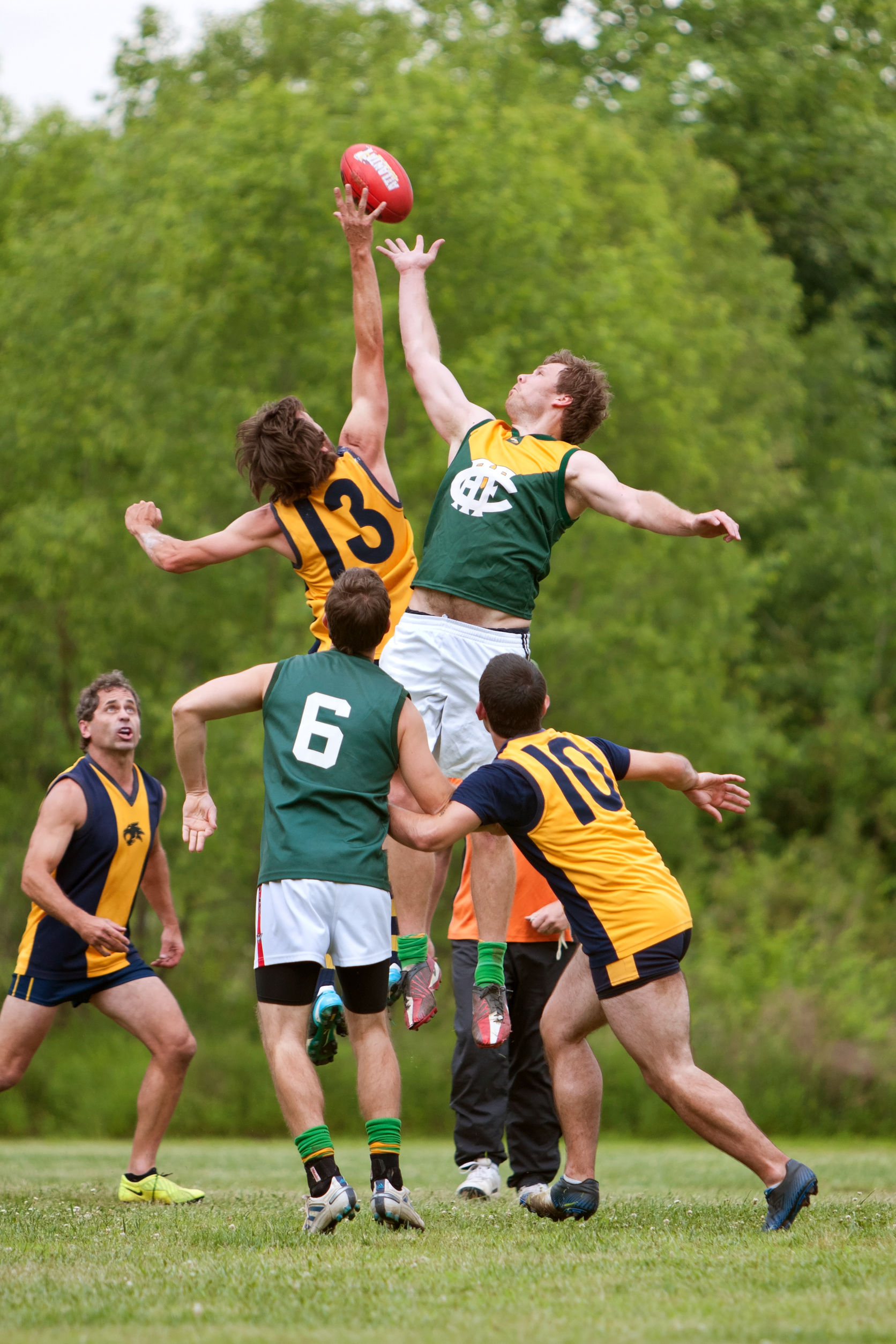I sprained my ankle – When can I get back on the field?
By Dr Nicola Stevens
Most of us have ‘rolled an ankle’ at some stage in our lives, whether it was playing sport or stepping awkwardly off a gutter. About forty percent of rolled ankles however do occur while playing sport.
A ‘rolled ankle’ is what we therapists and trainers commonly refer to as an ankle sprain. This is a type of acute joint injury that typically involves some degree of damage to the joint’s ligaments, the joint capsule and in some cases tendons, and occasionally even bone fracture. Dependent on the severity of a sprain, sometimes following the injury, the joint may become unstable and contribute to recurrent lower limb injuries.
So, how does the ankle function?
The ankle is a complex made up of three joints:
- The talocrural joint – The true ankle joint, is formed by the two leg bones (tibia and fibula) and the foot (talus). This joint allows the up and down movement of the foot that we call dorsiflexion and plantarflexion.
- The inferior tibiofibular joint – This is the joint between the two leg bones (tibia and fibula). Two ligaments and a thick membrane between the bones form a strong but flexible joint called a syndesmosis.
- The subtalar joint – This joint is below the true ankle joint, it allows side to side tilting movements of the foot and contributes to the shock absorption capabilities of the foot.
Ligaments help to support the ankle joint and enhance its stability under load. There are many ligaments that contribute to the ankle complex but those on the outer surface (lateral) of the ankle are more commonly injured due to the relative instability of the lateral joint and the weakness of these lateral ligaments.
The most common mechanism of injury for an ankle sprain is when the toes are pointed down and the foot turned in (plantar flexed and inverted). Typically this happens in a sudden change of direction or when landing on an uneven surface. This mechanism commonly results in damage to the lateral ligaments of the ankle. This particular ankle injury accounts for about 80% of all ankle injuries so this is the type of ankle injury we will be discussing in more detail below.
These sorts of joint injuries are classified mild to severe and are managed according to the severity of the sprain.


How can I reduce my risk of sustaining an ankle sprain?
The biggest risk factor for sustaining an ankle sprain is previous or existing ankle injury, especially if it’s poorly or inadequately rehabilitated. So, the first and most important thing you can do is to make sure you properly manage your injuries as they happen. This means consulting with your trainer or therapist and following their advice.
There are a number of other risk factors that can heighten the risk of sustaining an ankle sprain. These include;
-
- Limited ankle range of motion (ROM)
- Poor proprioception (reduced ability to sense where your body is in its environment)
- Deficiencies in postural control/ balance
- Reduced strength, agility, coordination and endurance
Forty percent of individuals who sustain an acute lateral ankle sprain will go on to develop chronic ankle instability, your trainer or therapist can help you work out if this is you. It is important to mitigate your risk of sustaining an acute ankle injury or recurrent ankle sprains through identifying any deficiencies in proprioception, balance and joint range of motion and target these areas in a regular weekly injury prevention/ rehabilitation program.
Other factors such as inadequate warm up or sport specific skills, inappropriate footwear, lack of external ankle support (tape/brace) for recent ankle sprains returning to sport, and poor condition of ground surface may also contribute to an increased risk of injury.
The most important question…. How long until I can return to play?
A clinical assessment is recommended by your healthcare professional to determine the severity of the injury and advise the most appropriate treatment and rehabilitation. In case of suspicion of a high-grade ligament injury, syndesmosis injuries, damage to bone surface or obvious fractures, the practitioner may request an MRI.
Providing there is no significant high-grade ligament injury, syndesmosis injury or fracture, acute phase management can begin, with the aim to decrease swelling with ice, compression and elevation for the first 48-72 hours.
Padding (Leukofoam) cut in the shape of a ‘U’ and wrapped with non-restrictive tape around the outer surface of the ankle is often helpful to decrease swelling. Care should be taken in the use of non-steroidal anti-inflammatory medication as it can be associated with complications and delay the natural healing process. Consult your doctor or pharmacist if you think you might require any medication for pain or swelling.
Following an acute ankle sprain, pain decreases rapidly within the first 2 weeks. Most ankle sprains have significantly improved within 2-6 weeks, however in some cases it may extend beyond this period. If you fall into the latter group, recovery guidance from your allied health team is a must!
What else can I do to help my ankle recover?
A comprehensive rehabilitation program should begin as soon as possible to minimise the chance of injury recurrence and promote optimal recovery. These sorts of exercise programs mainly consist of exercises to promote:
-
- Flexibility
- Balance/ Proprioception
- Strength
- Sport specific exercises
My three favourite ankle exercises
1) To encourage restoration of movement – Ankle alphabet
-
- Gently trace the alphabet with your foot 1-3 times.
- You can begin doing this exercise right after your injury to help improve range of motion.
2) To build strength – Calf raises
-
- Concentrating on raising the heel, putting your weight through the 1st and 2nd toe.
- Start on two legs and progress to single leg as tolerated.
3) To improve balance – Y balance
-
- Balancing on your affected leg, reach out with your unaffected leg and touch the ground lightly in front of you as far as you can. Repeat to the left at 45 degrees behind you, and to the right, 45 degrees behind you – in the shape of an upside down Y.
- For a more advanced balance exercise, ensure that you are stable on 1 leg with arms across chest before beginning this exercise.
Osteopathy & Exercise Therapy
Manual therapy, in particular mobilisation and soft tissue treatments, can help to provide a short-term increase in ankle range of motion while having an analgesic (pain reducing) effect. Manual therapy and exercise therapy combined enhances efficacy of mobilisation and is therefore recommended. Supervised exercises will allow you to capitalise on this and leads to faster return to full function and sport.
Your medical or allied health practitioner will clear you to return to play when you are able to perform functional exercises without pain during or after activity. Ensure that you continue to work on any strength deficits, maintain range of motion of the ankle, maintain proprioception, balance and sport specific skills to minimise the likelihood of recurrent sprains.
Now get back to it!
References
Ankle Injury | Sports Medicine Australia. (2019). Retrieved 10 September 2019, from https://sma.org.au/resources-advice/injury-fact-sheets/ankle-injury/



